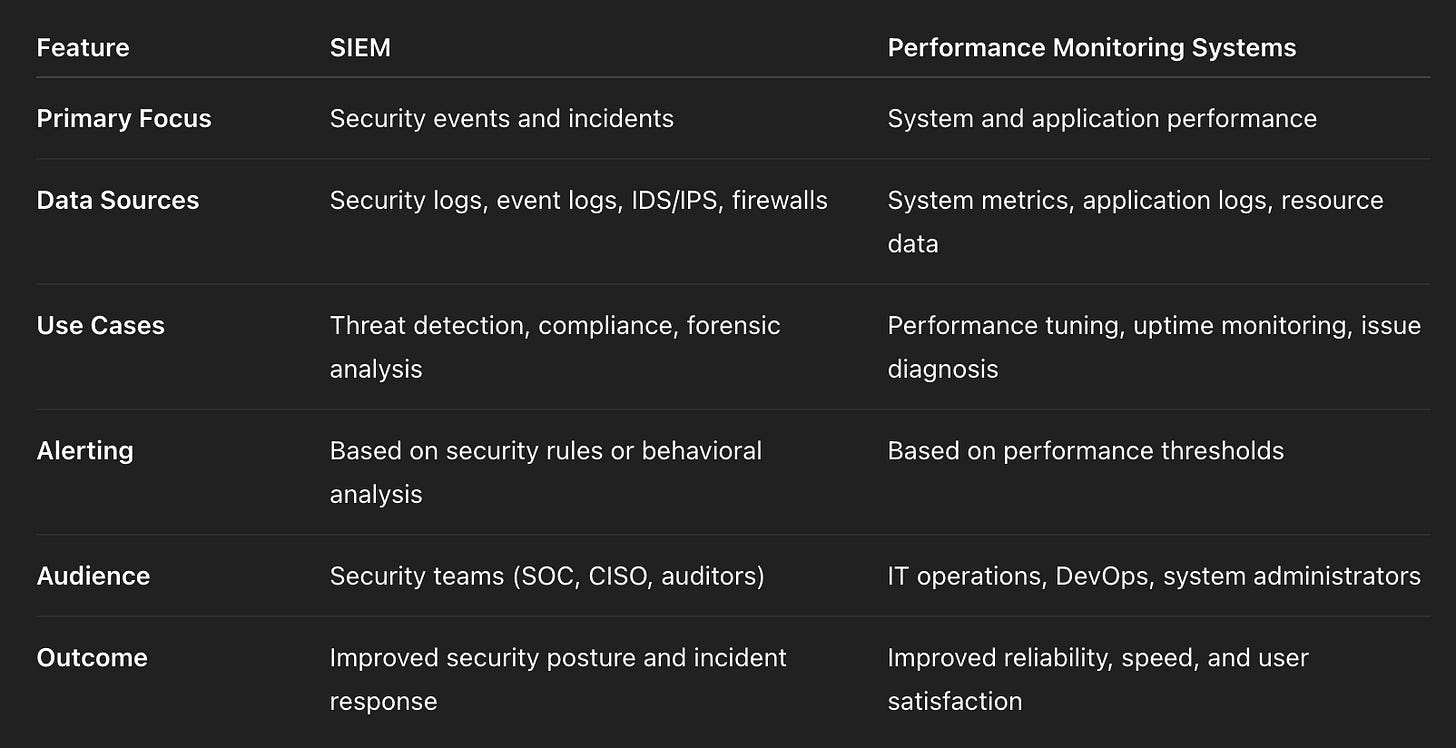Maintaining robust security while ensuring optimal system performance is crucial. Two fundamental tools help organizations achieve these goals: Security Information and Event Management (SIEM) systems and Performance Monitoring Systems (PMS). While they may seem to overlap in collecting and analyzing data from various sources, their core objectives and functionalities are distinct. Understanding these differences is essential for IT leaders, security teams, and system administrators alike.
What is SIEM?
Security Information and Event Management (SIEM) systems are designed to collect, analyze, and correlate security-related data across an organization's infrastructure. SIEM tools ingest logs, events, and alerts from multiple sources such as firewalls, intrusion detection systems, servers, and endpoint devices. By applying real-time analysis and historical context, SIEM systems help detect suspicious activities, generate alerts, and support forensic investigations after security incidents.
Key Capabilities of SIEM:
Centralized Log Management: Aggregates logs from diverse systems for unified visibility.
Threat Detection: Identifies anomalies, unusual behavior, and known attack patterns.
Compliance Reporting: Assists in meeting regulatory requirements (e.g., GDPR, HIPAA, PCI-DSS).
Forensic Analysis: Enables detailed investigation of incidents using historical data.
Real-Time Alerting: Notifies teams of potential threats based on predefined rules or machine learning.
What is a Performance Monitoring System?
Performance Monitoring Systems are tools used to track and evaluate the operational health and efficiency of IT infrastructure, applications, and services. Their primary goal is to ensure systems are running smoothly and to quickly identify bottlenecks or outages that could degrade user experience.
These systems monitor key performance indicators (KPIs) like:
CPU and memory utilization
Disk I/O rates
Network latency
Application response times
Transaction throughput
Key Capabilities of Performance Monitoring Systems:
Resource Monitoring: Tracks utilization and availability of hardware and software components.
Service Uptime Tracking: Ensures that applications and services are available and responsive.
Alerting on Performance Issues: Sends notifications when thresholds are breached (e.g., high CPU usage).
Root Cause Analysis: Helps identify the source of slowdowns or failures.
User Experience Optimization: Focuses on maintaining fast, reliable service delivery.
SIEM vs. Performance Monitoring: Key Differences
Complementary Tools in the IT Ecosystem
Despite their differences, SIEM and Performance Monitoring Systems are complementary, not competing. Many modern organizations integrate both to gain full visibility into their IT environment:
A SIEM can alert security teams to a brute-force attack.
A Performance Monitoring System might simultaneously show a spike in CPU usage or degraded application performance caused by the attack.
Together, they offer a holistic view—security insight plus operational impact.
Conclusion
Choosing between SIEM and Performance Monitoring Systems isn’t an either-or decision. Instead, organizations should recognize the distinct value each brings to the table. SIEM tools protect against evolving cyber threats and ensure compliance, while Performance Monitoring Systems keep your digital services running smoothly and efficiently.
By deploying both, IT teams can achieve stronger security, better system reliability, and ultimately, a more resilient infrastructure.





